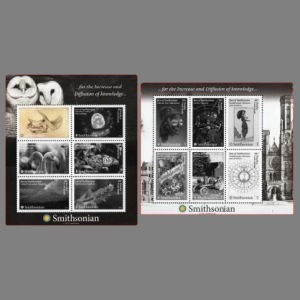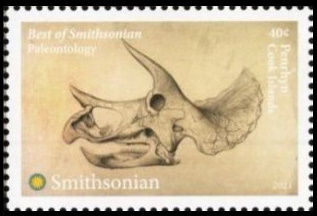the place where Paleontology and Paleoanthropology meets Philately
The Cook Islands
Dinosaurs and their fossils on stamps of the Cook Islands
| << previous country | back to index | next country >> |
Contents:
- Country overview
- Philately of the Cook Islands
- Official stamps of the Cook Islands related to Paleontology
- References
- Acknowledgements
Cook Islands, is a self-governing island country in the South Pacific Ocean in free association with New Zealand, named after Captain James Cook, who visited the islands in 1773 and 1777.
It comprises 15 islands whose total land area is 240 square kilometres (93 sq mi), with total population of about 18,000.
The Cook Islands became a British protectorate in 1888 and in 1900 administrative control was transferred to New Zealand.
In 1965 residents chose self-government in free association with New Zealand.
New Zealand is responsible for the Cook Islands' defence and foreign affairs, but these responsibilities are exercised in consultation with the Cook Islands.
The Cook Islands have been an active member of the Pacific Community since 1980.
[R1]
The first stamps of the Cook Islands were issued on 7 May 1892. [R2]
Official stamps of Cook Islands (Penrhyn atoll) related to Paleontology: Dinosaurs and their fossils
| xx.07.2021 Penrhyn Island of the Cook Islands - "Smithsonian" [1] | ||
 |
|
|
Notes:
 |
| Fossil skull of Triceratops on Paleontology stamp of Penrhyn Island of the Cook Islands 2021 |
At one time, this atoll had the largest population in the Cook Islands. The Polynesians discovered and settled the island at least 800 years ago.
Sadly, the atoll was almost completely depopulated by Peruvian slavers in 1864.
Annexed by Great Britain in 1888, the atoll came under New Zealand administration in 1901. Penrhyn has several schools, a hospital, and an airstrip, which were built during World War II.
In 2016 the population of the atoll was about 220. [R3]
Philatelic Collector Inc. prints several issues per year on the behalf of the atoll. The philatelic value of these stamps is doubtful, even though they are listed in the major stamp catalogs.
A sketch of a skull of Triceratops is depicted on a stamp from the mini-sheet “Best of the Smithsonian”.
The Smithsonian is one of the major Natural History Museums of the USA and first appeared on a stamp from 1946.
Triceratops has nothing to do with the Penrhyn atoll or the Cook islands, as its fossils were discovered in North America only. [R4]
References:
- [R1] Cook Islands: Wikipedia, WikiTravel, FlagCounter.
- [R2] Postal History and Philately of Cook Islands:
Wikipedia,
Links to official website of the Post Authority, stamp catalog and a list of new stamps of Cook Islands are here. - [R3] Penrhyn atoll: Wikipedia, Encyclopedia Britannica, cookislands.travel.
- [R4] Triceratops: Wikipedia,
Acknowledgements:
Many thanks to Dr. Peter Voice from Department of Geological and Environmental Sciences, Western Michigan University, for reviewing the draft page and his very valuable comments.
| << previous country | back to index | next country >> |